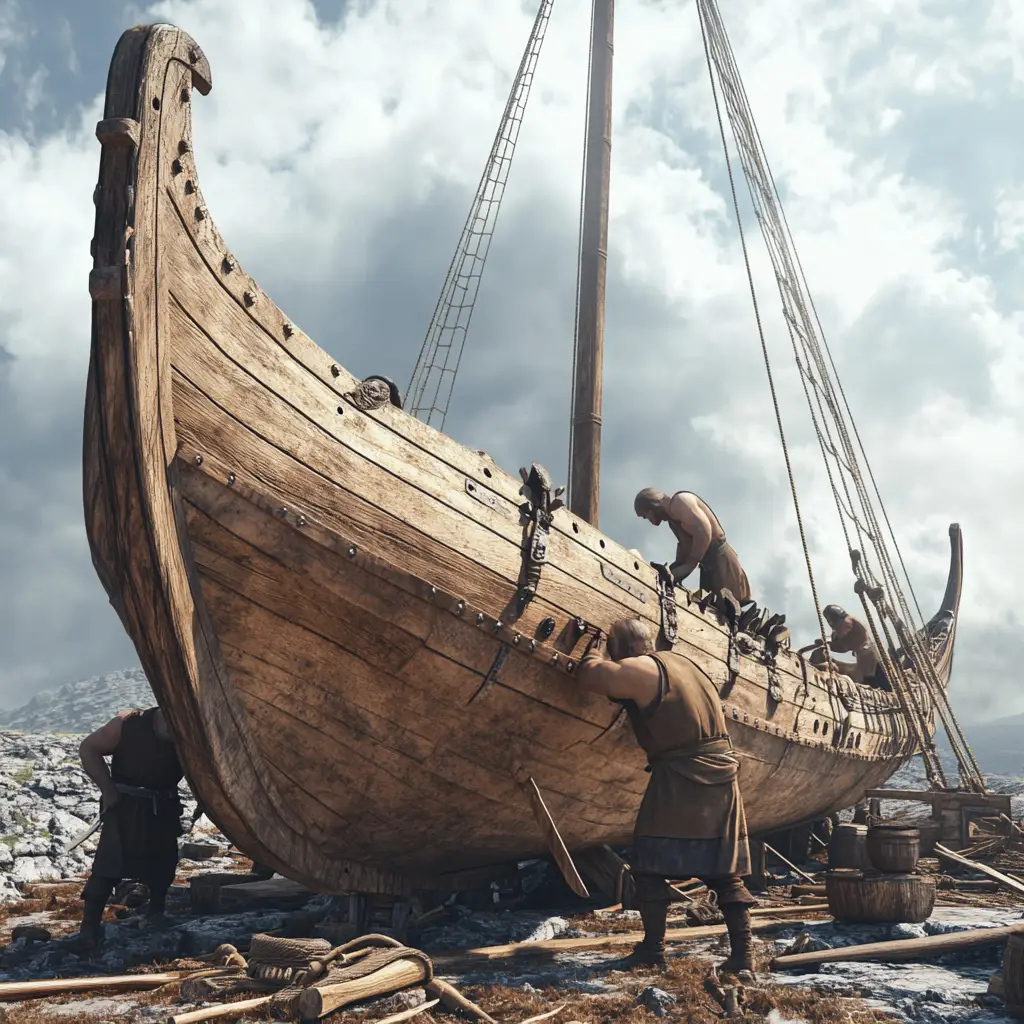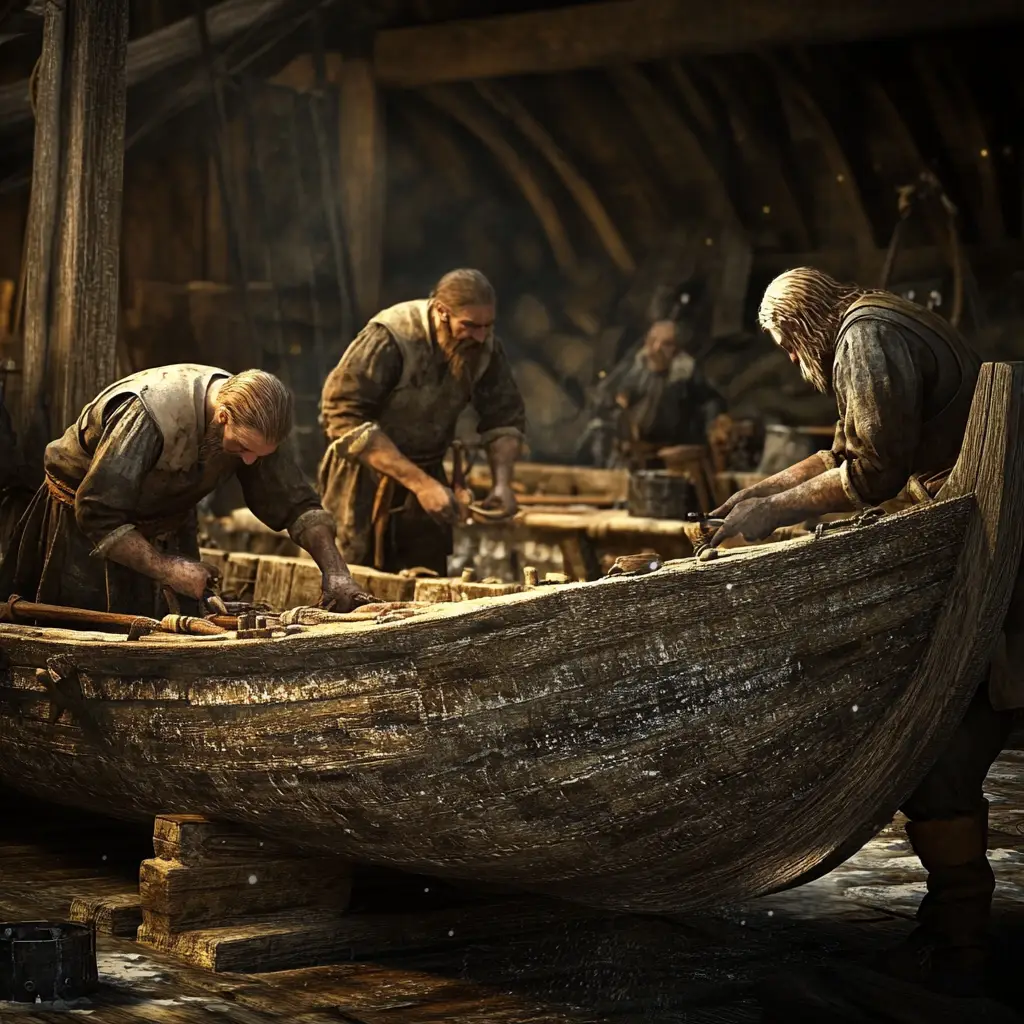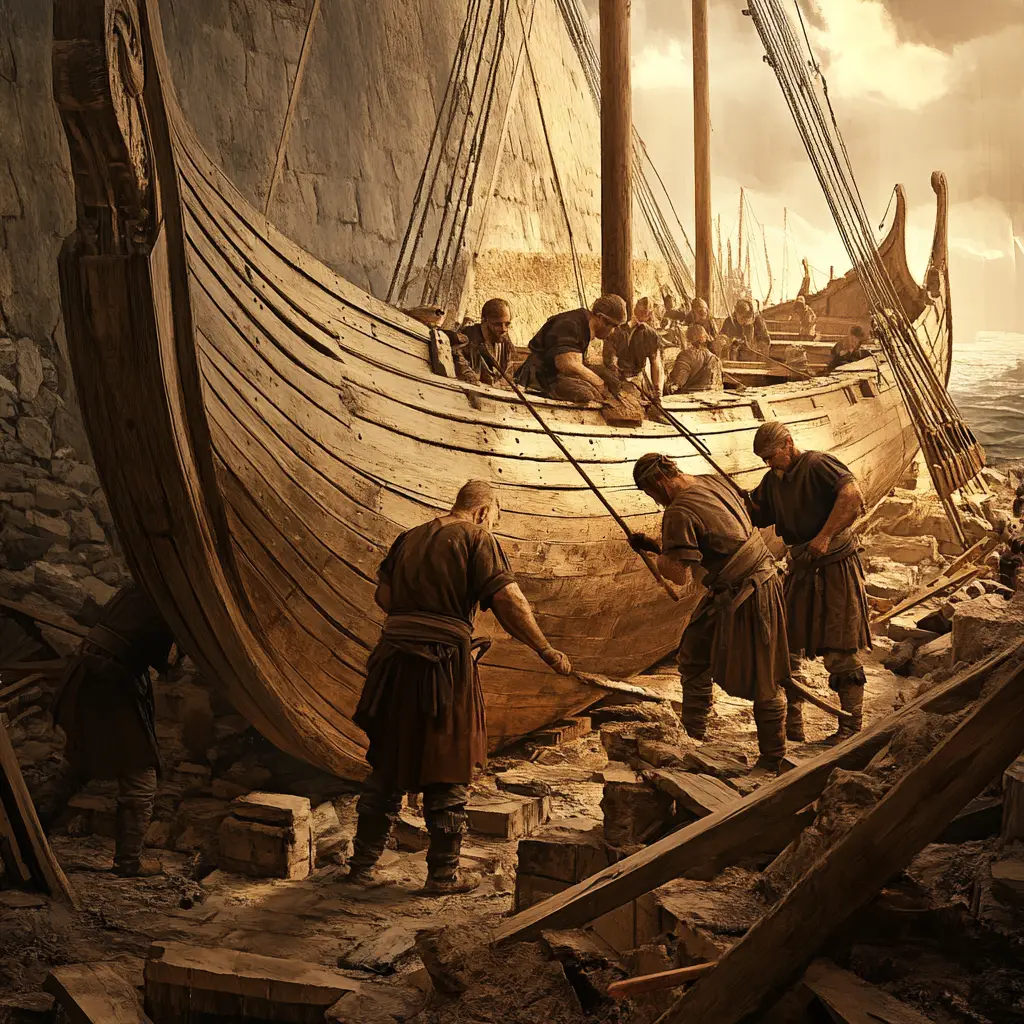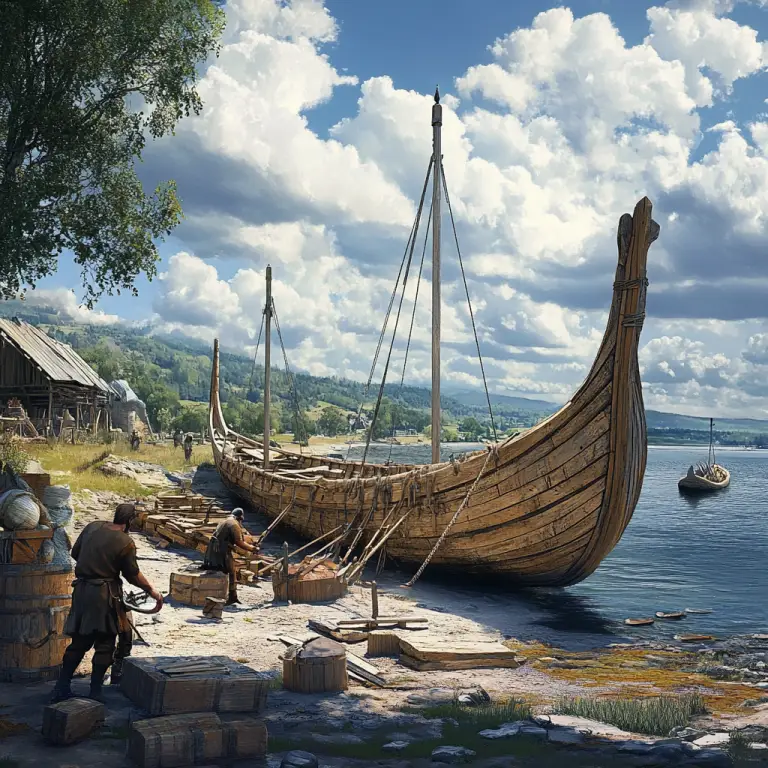Viking ship builders were master craftsmen whose skills helped define an entire era of seafaring exploration, trade, and conquest. Using traditional techniques passed down through generations, they constructed vessels that were both highly functional and beautifully crafted. These ships, especially the famous longships, were central to Viking culture and their reputation as formidable navigators and warriors.
The building process began with the careful selection of materials, primarily oak, prized for its strength and durability. Shipbuilders shaped the timber using axes and adzes, creating overlapping planks in a method known as clinker building. This technique not only gave the ships their iconic appearance but also provided the flexibility needed to navigate rough northern seas.
Each ship featured a keel to improve stability and steering, with a shallow draft allowing them to travel in both deep oceans and shallow rivers. This versatility gave the Vikings a strategic advantage, enabling swift raids and rapid inland travel.
Viking ship builders paid close attention to balance and symmetry, ensuring their vessels were fast, agile, and seaworthy. Intricate carvings, particularly at the bow and stern, added cultural and symbolic significance, often depicting animals or mythological figures believed to offer protection or instil fear.
Their craftsmanship influenced shipbuilding across Europe and left a lasting legacy in maritime history. The precision and ingenuity of Viking ship builders continue to impress historians, archaeologists, and boatbuilders today.



